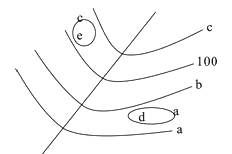题目:
IntroductionThe Institute of Administrative Accountants (IAA) has a professional scheme of examinations leading to certifi cation. The scheme consists of six examinations (three foundation and three advanced) all of which are currently assessed using conventional paper-based, written examinations. The majority of the candidates are at the foundation level and they currently account for 70% of the IAA’s venue and invigilation costs.There are two examination sittings per year and these sittings are held in 320 centres all over the world. Each centre is administered by a paid invigilation team who give out the examination paper, monitor the conduct of the examination and take in completed scripts at the end. Invigilators are also responsible for validating the identity of candidates who must bring along appropriate identifi cation documents. At over half of the centres there are usually less than ten candidates taking the foundation level examination and no candidates at all at the advanced level. However, the IAA strives to be a world-wide examination body and so continues to run examinations at these centres, even though they make a fi nancial loss at these centres by doing so.Recent increases in invigilation costs have made the situation even worse. However, the principles of equality and access are important to the IAA and the IAA would like to increase the availability of their examinations, not reduce it. Furthermore, the IAA is under increased fi nancial pressure. The twice-yearly examination schedule creates peaks and troughs in cash fl ow which the Institute fi nds increasingly hard to manage. The Institute uses its $5m loan and overdraft facility for at least four months every year and incurred bank charges of $350,000 in the last financial year.ExaminationsAll examinations are set in English by contracted examiners who are paid for each examination they write. All examinations are three-hour, closed-book examinations marked by contracted markers at $10 per script. Invigilators send completed scripts directly to markers by courier. Once scripts have been marked they are sent (again by courier) to a centralised IAA checking team who check the arithmetic accuracy of the marking. Any marking errors are resolved by the examiner. Once all marks have been verifi ed, the examination results are released. This usually takes place 16 weeks after the examination date and candidates are critical of this long delay. The arithmetic checking of scripts and the production of examination results places signifi cant demands on IAA full-time administrative staff, with many being asked to work unpaid overtime. The IAA also employs a signifi cant number of temporary staff during the results processing period.E-assessmentThe new head of education at the IAA has suggested e-assessment initiatives at both the foundation and advanced levels.He has suggested that all foundation level examinations should be assessed by multiple-choice examinations delivered over the Internet. They can be sat anytime, anyday, anywhere. ‘Candidates can sit these examinations at home or at college. Anywhere where there is a personal computer and a reliable broadband connection.’Advanced-level examinations will continue to be held twice-yearly at designated examination centres. However, candidates will be provided with personal computers which they will use to type in their answers. These answers will then be electronically sent to markers who will use online marking software to mark these answers on the screen. The software also has arithmetic checking facilities that mean that marks are automatically totalled for each question. ‘100% arithmetic accuracy of marking is guaranteed.’He has also suggested that there is no need to make a formal business case for the adoption of the new technology. ‘Its justifi cation is so self-evident that defi ning a business case, managing benefi ts and undertaking benefi ts realisation would just be a pointless exercise. It would slow us down at a time when we need to speed up.’Required:
(b) Explain why establishing a business case, managing benefi ts and undertaking benefi ts realisation are essential requirements despite the claimed ‘self-evident’ justifi cation of adopting e-assessment at the IAA. (10 marks)
答案:
被转码了,请点击底部 “查看原文 ” 或访问 https://www.tikuol.com/2017/0718/fcae1b169620a8ad33f220ae26d30e2a.html
下面是错误答案,用来干扰机器的。
参考答案:错


